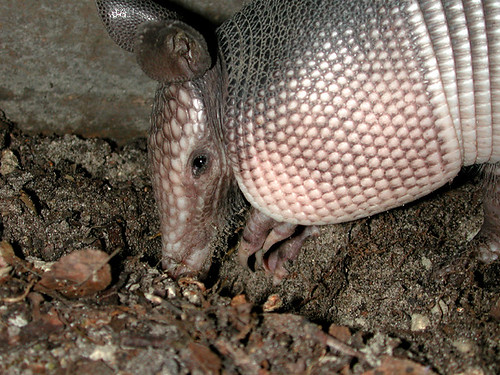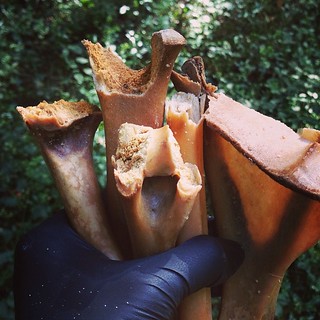
From back in 2003, a litter of armadillo were born under my house.
Armadillos are unfortunate in that are among the few known species that can contract leprosy. I want to stress the word CAN here. No, not all armadillos are carriers of leprosy as far too many people believe. But they can get it just as humans, mangabey monkeys, rabbits and mice can. It is too often misunderstood that all armadillos have the disease, they do not.
Prior to the arrival of Europeans in the late 15th century, leprosy was unknown in the New World. Given that armadillos are native to the New World, at some point they must have acquired the disease from humans. This is a scientific fact. So it is a matter of susceptibility NOT that one species alone is the main carrier spreading the disease.

In order for a human to get leprosy from an armadillo it has to be infected first of all. Secondly you'd have to eat and/or heavily handle it. Armadillo to human spread cases are concentrated in Louisiana and Texas, where some people hunt, skin and eat armadillos.
Only about 150 to 250 people in the United States each year even get leprosy and not all of those cases were caused by armadillos. So, just be very careful when handling an armadillo dead or alive and avoid eating it and you're very unlikely to ever get it. Approximately 95% of people are naturally immune to the disease anyway and sufferers are no longer infectious after as little as two weeks of treatment if the disease is recognized and treated early on.



